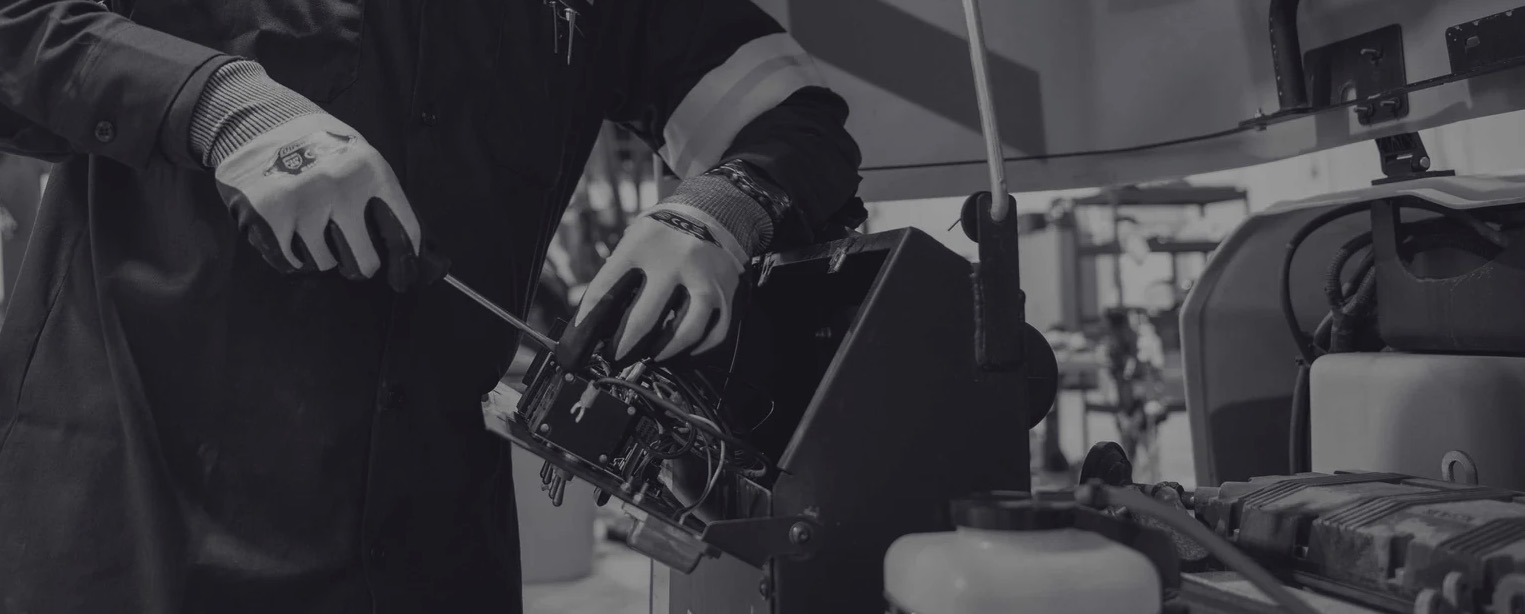
— November 04, 2025

Heavy equipment like tractors, excavators and skid steers play a crucial role in construction and related industries. While these machines are designed to operate under extreme conditions, continual exposure to harsh operating environments can take its toll.
Regularly greasing your heavy equipment is one of the best ways to keep your machine resistant to challenging operating environments and minimize downtime. Proper lubrication of your heavy equipment through greasing is crucial to maintaining its longevity, performance and cost effectiveness.
In this article, we’ll go over some of the important aspects of greasing heavy equipment and how to avoid the problems associated with improper lubrication.
Greasing your heavy equipment is necessary to prevent metal-on-metal contact between the machine’s moving parts. Joints, hinges, bearings and linkages need to receive grease regularly in order to stay lubricated and prevent metal components from grinding against each other.
If you neglect your heavy equipment by not greasing it frequently enough, you will quickly run into problems.
Heavy equipment components that have been allowed to run dry will grind against each other during operation, causing metal particles to contaminate the grease and other areas of the machine.
To avoid the problems associated with dry components, machines should be lubricated often. Your heavy equipment’s operating manual will indicate how often each of your machine’s components should be greased.
Your machine’s operating manual will provide a diagram of the grease points, along with the type of grease each grease point should receive.
If you cannot find this information in the operating manual, it may be printed somewhere on the machine, such as the inside of the driver’s side door.
While the specific points that require lubrication will vary depending on the make and model, here are some general areas that typically require greasing:
Grease guns are the most popular way to apply lubrication to grease points on heavy equipment. They can be powered by air, electricity or by hand.
To use a grease gun, begin by cleaning the grease point of dirt and debris. If you don’t, you may force the dirt and debris into the grease point, contaminating the grease.
Once the grease point is clean, attach the end of the grease gun to the grease nipple. Inject two to three pumps of grease into the grease point. A small amount of grease will begin to come out of the grease fitting once it has received a sufficient amount.
Zerk fittings are special fittings designed to receive grease from a grease gun. They are found at each of the grease points on your heavy equipment. Zerk fittings are also called grease nipples, grease zerks, grease fittings or alemite fittings.
The frequency of greasing heavy equipment will depend on the machine’s make and model. Your machine’s operating manual should provide a diagram of your machine’s grease points and indicate how frequently each should receive grease.
Generally, it’s a good idea to grease your machine daily. Some heavy equipment may even require more frequent greasing, such as every eight hours.
If you undergrease your machine or don’t grease it at all, the moving parts can wear out more quickly, leading to premature failure and costly repairs. Undergreasing can also cause overheating, corrosion and increased friction, which can reduce equipment performance and productivity.
On the other hand, overgreasing can lead to excessive buildup, which can cause the machine to operate inefficiently. Overgreasing can attract dust, dirt and debris, leading to accelerated wear and tear of the machine’s components.
While both under- and overgreasing are bad for your machine, undergreasing is certainly far worse. Undergreasing is a sure recipe for breakdowns and mechanical failure, whereas the consequences of overgreasing your machine aren’t as severe.
When choosing the best grease for your machine, consult with your machine’s operating manual. It will provide the recommended grease for each of your machine’s grease points.
In addition to the manufacturer’s recommendations, you should also consider the operating environment. Machines operated in cold climates will require grease with a lower viscosity (thinner), whereas machines operated in warm climates will require grease with a higher viscosity (thicker).
Another factor to consider is whether your machine will be operated in wet conditions, such as in a river or in the ocean. Machines that are exposed to wet conditions may require special grease that is more water-resistant and suitable to these conditions.
If you’re not sure which type of grease is right for your machine and operating environment, consult with your grease supplier. They should be able to help you reach an informed decision about which grease would work best for your situation.
Here are some additional maintenance tips for greasing heavy equipment:
Properly greasing your machine’s parts is an important step in maintaining the quality of your equipment. When it’s time to replace a worn component, visit the MechLink Shop. Our extensive online parts catalog features the OEM and aftermarket parts you need to get up and running again. Still can’t find the part you need? Reach out to one of our parts experts for personalized assistance.

Key components of heavy equipment undercarriage maintenance
December 19, 2025

How to change the hydraulic filter in your heavy equipment and why it matters
December 19, 2025

The best equipment for snow removal: heavy machinery to use this winter
December 18, 2025

How to prevent rust and corrosion on heavy construction equipment
December 18, 2025